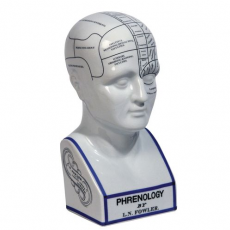
More recently in neuroscience, scientists have become interested in how the brain as a whole controls behaviour. Since the neuron doctrine arose, scientists have had some idea that different parts of the brain relate to certain parts of the body, and this enables us to have some idea about the sensory and motor areas of our brain, but neuro-scientists wanted to understand how other parts of the brain contributed to controlling a human, since after all, the human body is such a powerful and well-designed machine.
Interest in how regions of the brain related to specific behaviours was strong, even before the neuron doctrine itself had been accepted. Even in the 16th century physicians were speculating about the problems caused by different types of brain damage. In the 19th century however, some still believed that the brain worked as a whole. They suggested that all parts were of equal significance, contributing to one large function. On the other hand, the localisation theory was put forward, which suggested that different areas of the brain were specialised and designed to fulfil specific purposes. This clearly became the accepted belief, since it is an assumption that most of modern day neuroscience is based around.
Early attempts to understand the localisation of brain functions seem somewhat laughable by today’s standards. Phrenology was the discipline that became well-known, and this was a somewhat guess-based version of the neuroscience we see today. In this approach, various segments of the head corresponded to different skills and abilities. The power of each area was measured by its size. Therefore, the brain shape differed depending on what a person was better or worse at. Some people believed that by feeling the shape of the skull, you could tell a person’s strengths or weaknesses. In fact, machines known as phrenometers were developed to do this.
Eventually, people realised that there was little truth in the ideas of phrenology, since they had not been scientifically proven and so people turned towards other, more scientific approaches. The earliest of these was the use of brain lesion patients to determine function. By studying behavioural changes in patients who had damaged their brains, functions could be lateralised. The areas that were damaged were clearly responsible for the functions that had been reduced. This led to the identification of Broca’s area, which is linked to a type of language problem, and this function is still accepted today. Electrical stimulation to the brain was also used, in order to see what happened as a result when stimulating specific areas. This further helped to develop a broad map of identifiable brain areas.
It’s clear to see that neuroscience has really developed, not just in recent years, but across time, since there has always been an interest in this area. It’s understandable why we have such an interest in this discipline, since it’s fascinating how such a small, almost insignificant object has the power to bring to life a system as complex as the human body. Only in recent years has more in-depth analysis of brain regions been possible, with the invention of imaging techniques, but this means that hopefully before long we will have a complete understanding of how brain functions map to structure and we can move on to asking the next big question in neuroscience!
Image from: http://www.contextinteriors.co.uk/media/ecom/prodxl/MG020%20xl.jpg

0 Comment:
Be the first one to comment on this article.